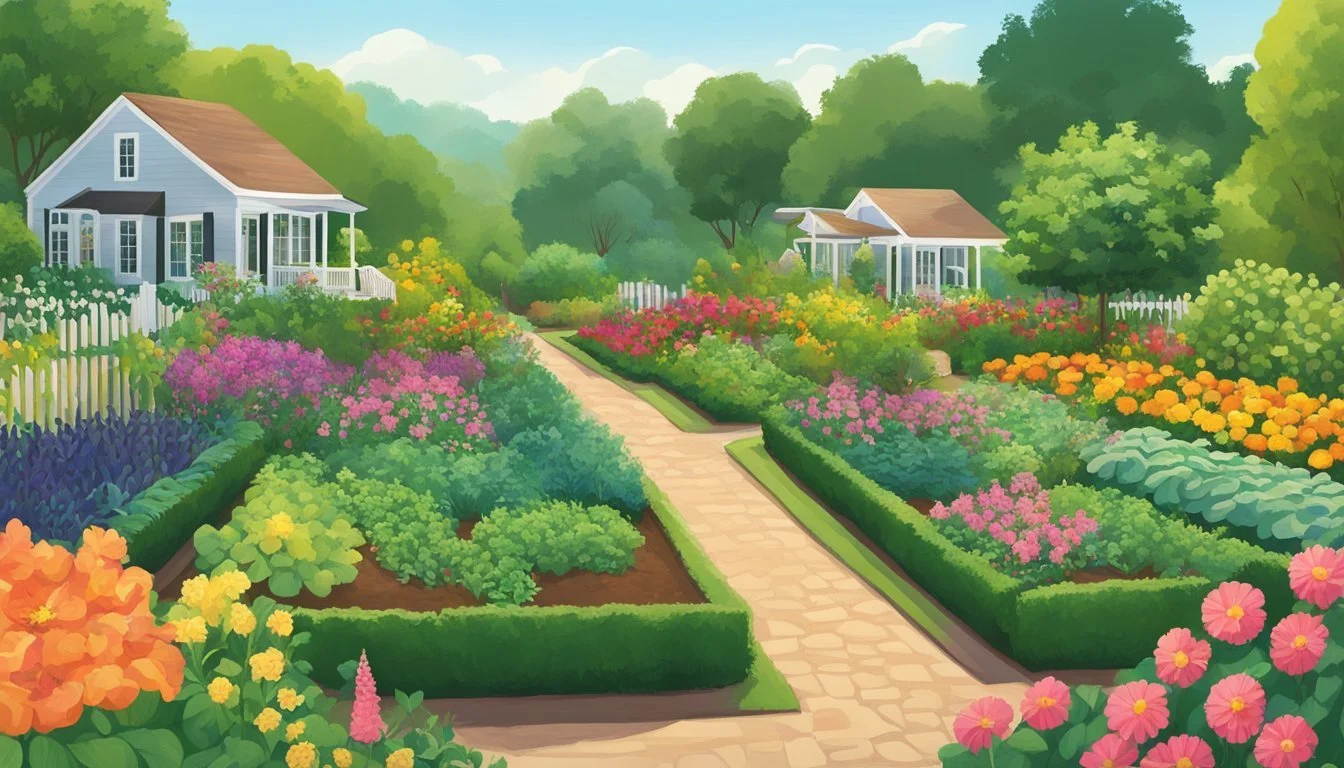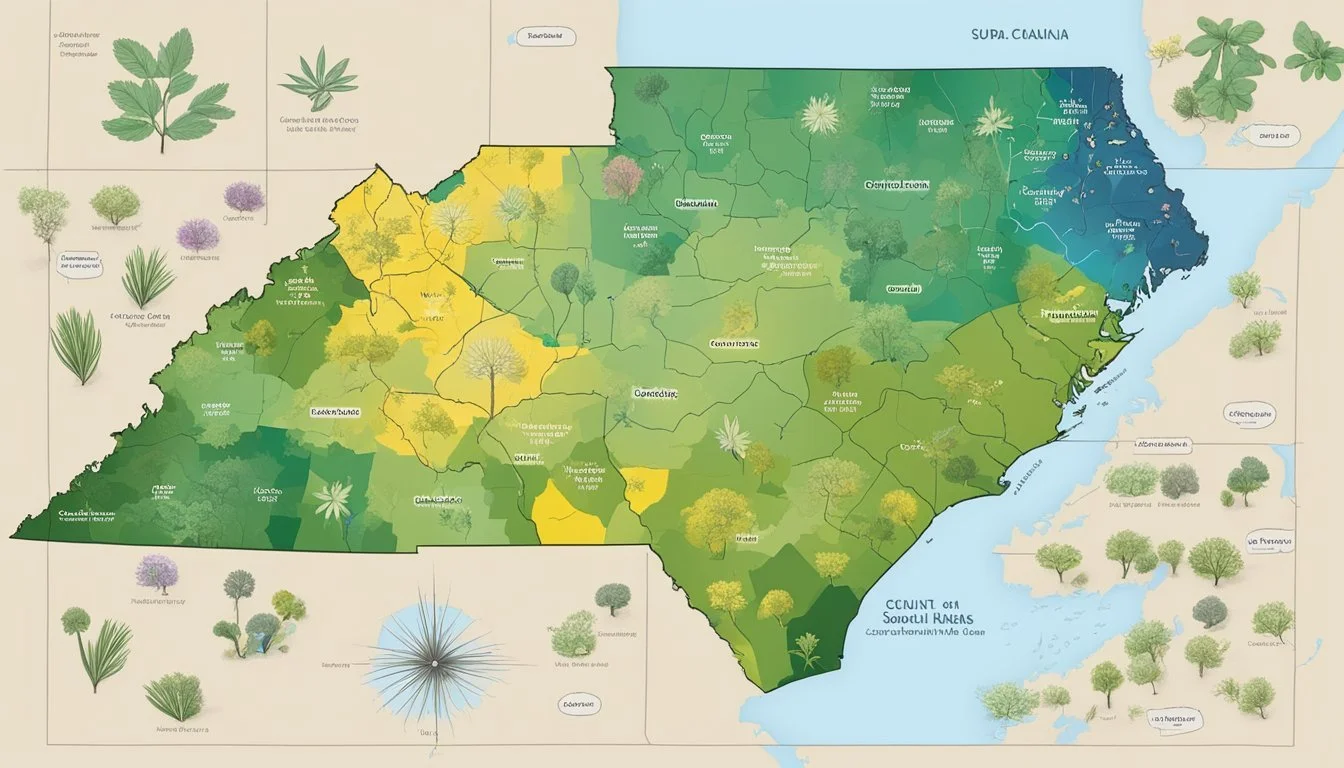USDA Hardiness Zones in South Carolina
A Guide to Successful Gardening
Understanding the USDA Hardiness Zones is essential for gardeners and agricultural planners in South Carolina. These zones are delineated by the USDA Plant Hardiness Zone Map, which reflects the average annual extreme minimum winter temperatures of various regions. This mapping system aids in determining which plants are most likely to thrive in specific locations, providing a reliable framework for landscape planning and plant selection.
In South Carolina, the climate varies enough to encompass multiple hardiness zones. This variation allows a diverse range of plants to be cultivated across the state. From the coastal areas to the upstate, the mapped zones give gardeners a comprehensive guide for which perennial plants can withstand the winter temperatures typical of their area.
Updates to the USDA Plant Hardiness Zone Map are instrumental for staying current with shifting climatic trends. The most recent update takes into account the subtle changes in weather patterns and provides the most accurate information for South Carolina’s growers, ensuring successful horticultural endeavors and sustainable agricultural operations throughout the state.
Understanding USDA Hardiness Zones
The USDA Hardiness Zones are a crucial tool for gardeners and farmers, providing a geographical guide to the selection of plants based on the climate of specific regions.
Defining Hardiness Zones
Hardiness zones are geographic areas defined by a range of climatic conditions relevant to plant growth and survival. The most commonly used map for this purpose is the USDA Plant Hardiness Zone Map. It segments the United States into zones based on the average annual minimum winter temperature. Each zone reflects a 10-degree Fahrenheit range, further divided into "a" and "b" to represent 5-degree Fahrenheit increments.
USDA's Role in Hardiness Zoning
The United States Department of Agriculture (USDA) plays a pivotal role in establishing and maintaining the Hardiness Zone Map used across the nation. By analyzing climate data, the USDA creates and updates this map to provide a reliable resource for horticulturists.
Interpreting the Hardiness Zone Map
To interpret the Hardiness Zone Map, one must look at the colors and numbers representing specific zones. Here's a simple breakdown:
Zone 7a: 0°F to 5°F
Zone 7b: 5°F to 10°F
Zone 8a: 10°F to 15°F
Zone 8b: 15°F to 20°F
By identifying their specific zone, gardeners can determine which plants are most likely to thrive in their location. It is important to note that this map is a guide and other factors like soil quality and sun exposure also play significant roles in plant survival.
South Carolina's Climate and Hardiness Zones
Understanding South Carolina’s climate is essential for gardeners and growers as it directly influences which plants can flourish. The state’s diverse range of temperatures impacts the USDA Plant Hardiness Zones, a key tool for determining suitable plantings.
Regional Climate Overview
South Carolina's climate varies from the cooler western areas to the temperate southeast coast. Influenced by the Atlantic Ocean, the state generally experiences a humid subtropical climate, with mild winters across most regions. The varying elevations and proximity to the coast create distinct climate zones within the state that affect local vegetation and gardening strategies.
Hardiness Zones within South Carolina
The hardiness zones within South Carolina span a range that includes zones 7a through 9a:
Zone 7a: 0°F to 5°F
Zone 7b: 5°F to 10°F
Zone 8a: 10°F to 15°F
Zone 8b: 15°F to 20°F
Zone 9a: 20°F to 25°F
These zones are derived from the average annual extreme minimum winter temperature and guide gardeners on which plants are most likely to survive the winter in different locations across South Carolina. For instance, cities like Greenville in the northwest may be categorized under a cooler zone compared to coastal cities such as Charleston.
Gardening in South Carolina's Hardiness Zones
Gardening in South Carolina requires an understanding of the region's diverse hardiness zones. Growers and gardeners must select appropriate plants and adapt their care strategies to the localized climates throughout the state.
Selecting Plants for South Carolina Climates
When choosing plants for a garden in South Carolina, it's crucial to consider the USDA Plant Hardiness Zone of the specific area. South Carolina's zones range from 7a to 9a, indicating a variety of plants that can flourish statewide. Gardeners should visit the USDA Plant Hardiness Zone Map to determine the exact zone for their locale. Coastal areas typically fall within the warmer zones, allowing for a broader selection of perennial plants.
Seasonal Gardening Tips
Here are some concise tips for gardening throughout the seasons in South Carolina:
Spring: Prepare soil with compost and start seeding hardy vegetables after the last frost.
Summer: Keep plants hydrated and mulched to protect from intense heat, especially in zones 8b and 9a.
Fall: Plant trees and shrubs allowing them to establish roots before winter.
Winter: In cooler areas, such as zone 7a, protect sensitive plants with mulch or burlap.
Seasonal variety in weather conditions necessitates different gardening approaches. Detailed regional tips can be found at resources like Gardening Know How.
Understanding Winter Hardiness in Plants
Winter hardiness refers to a plant's ability to survive the extreme minimum temperatures experienced in an area. In South Carolina, this can vary significantly from the northwest to the coastline. Plants labeled for Zone 7a withstand temperatures as low as 0°F to 5°F, while Zone 9a plants can survive in minimum temperatures of 20°F to 25°F. Understanding this concept is crucial for year-round plant survival and is explained in resources like the South Carolina Interactive USDA Plant Hardiness Zone Map.
Practical Applications for Growers and Gardeners
Understanding USDA Hardiness Zones in South Carolina is crucial for successful plant growth. It guides gardeners and growers in making informed decisions on plant selection and protective measures throughout the seasons.
Planting Strategies by Zone
In South Carolina, hardiness zones range from 7b to 9b, which dictates specific planting strategies by zone. Zone 7b, with its occasional falls into lower temperatures, may dictate a later planting schedule to avoid frost damage. Contrastingly, Zone 9b's milder winter allows for an extended planting season. Gardeners in this area should prioritize selecting plants that can withstand a diverse temperature range, from short cold spells to long hot summers.
Protecting Plants from Winter Extremes
Protecting plants from winter extremes involves understanding each zone's lowest temperatures. For instance, Zone 7b, which can dip to as low as 5°F, may require additional mulching and windbreaks to safeguard plants. In Zone 8a or 8b, strategic placement of plants near structures may shield them from harsh winds, reducing the risk of winter burn.
Hardiness Considerations for Annuals and Perennials
Choosing between annuals and perennials depends on their resilience to the local winter climate. Annuals are well-suited for all zones as they complete their lifecycle in one season, while perennials must be chosen according to specific zone hardiness. For example, perennials planted in Zone 9b should tolerate hot summers and mild winters, whereas those in colder zones like 7b require robust cold tolerance.
Resource and Reference Materials
For gardeners and agriculturists seeking to understand which plants will flourish in South Carolina, two key sets of resources provide pivotal information: the USDA’s official map and local agriculture extensions. These resources leverage data-driven insights from authoritative entities such as the Agricultural Research Service (ARS) and the U.S. Department of Agriculture (USDA).
USDA's Official Hardiness Zone Map
The USDA Plant Hardiness Zone Map serves as the primary reference for gardeners and researchers. It delineates regions by their climatic conditions, specifically the average annual extreme minimum winter temperature. The map is divided by 10-degree Fahrenheit zones and further refined into 5-degree Fahrenheit half zones. This resource is particularly crucial for determining plant suitability based on location and zip code:
Zone 7a: 0°F to 5°F
Zone 7b: 5°F to 10°F
Zone 8a: 10°F to 15°F
Zone 8b: 15°F to 20°F
Local Agricultural Extensions and Resources
South Carolina gardeners can also turn to local agricultural extensions for nuanced guidance tailored to specific locations within the state. This information often includes advice on plant care and gardening practices best suited for the state’s diverse climate zones. Local extensions are invaluable for the more detailed, community-specific questions that may not be covered by the broader parameters of the USDA map.
For direct local support, contact details and location-specific resources can typically be found through county offices or university-affiliated extension programs. These entities are dedicated to providing up-to-date information grounded in the latest research from the ARS and the U.S. Department of Agriculture.
Frequently Asked Questions
Understanding the USDA Hardiness Zones in South Carolina is essential for gardeners and farmers to select plants that will thrive in their specific climate. This section addresses common questions related to the hardiness zones within the state.
What are the different USDA hardiness zones found within South Carolina?
South Carolina is diverse in its climate regions, encompassing USDA hardiness zones ranging from 7b through 9b, as indicated on the 2023 USDA Plant Hardiness Zone Map.
How can I determine the specific planting zone for my location in South Carolina using my zip code?
To find the precise planting zone for any location in South Carolina using a zip code, visitors can reference local online tools such as the South Carolina Interactive USDA Plant Hardiness Zone Map.
Which plants are best suited for cultivation in Zone 8b in South Carolina?
In Zone 8b of South Carolina, gardeners have the opportunity to cultivate a variety of plants that are tolerant to minimum temperatures of 15°F to 20°F. These include perennials such as azaleas and camellias, as well as a variety of vegetables and fruits suitable for this zone.
Which USDA hardiness zones cover the area of Columbia, SC?
Columbia, SC, falls primarily within USDA hardiness zone 8a, where winter temperatures can drop to an extreme minimum of 10°F to 15°F.
What are the climatic characteristics of Charleston, SC's hardiness zone?
Charleston, SC, enjoys a relatively mild climate reflected by its inclusion in the USDA hardiness zone 8b, allowing for a wide range of plant species that can withstand its winter temperature extremes.
How is Myrtle Beach classified in terms of USDA hardiness zones?
Myrtle Beach is classified within USDA hardiness zone 8b, benefiting from the area's temperate climate, which is conducive to growing a broad spectrum of plants adapted to mild winter conditions.





